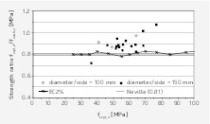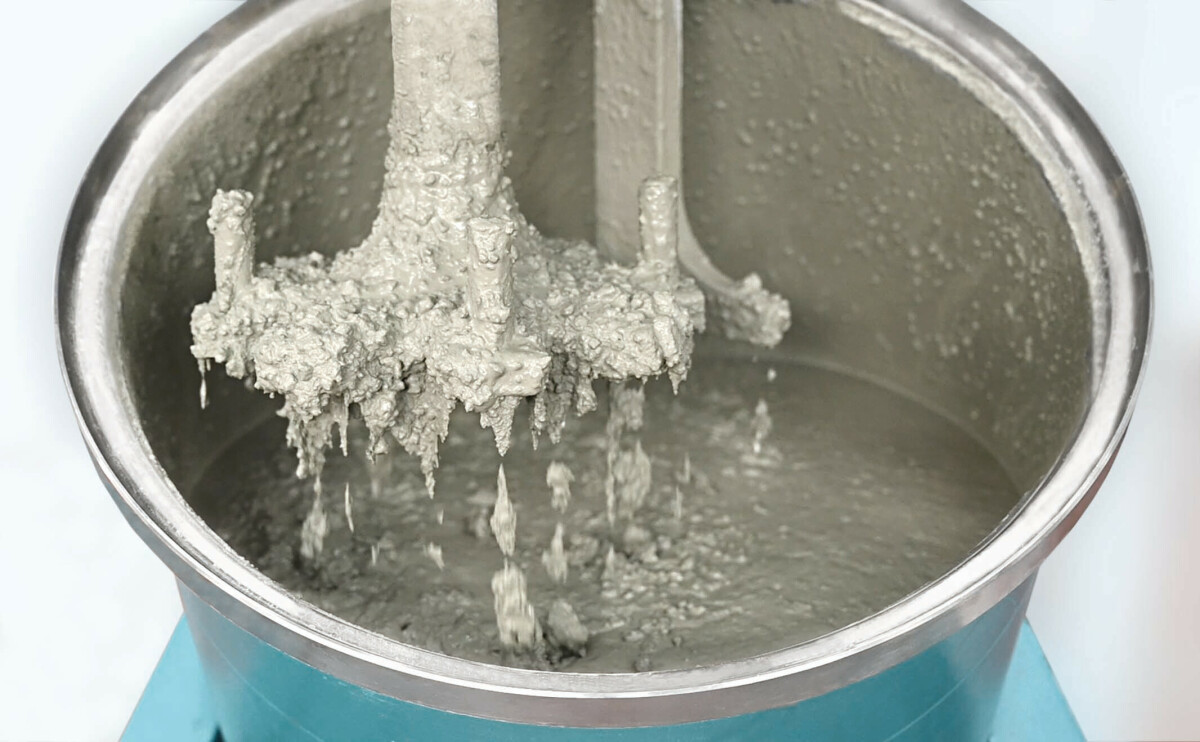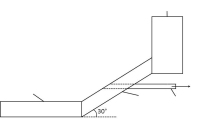New technology improves the result when casting with SCC
The patented Visco Probe 1 viscometer is a success. The system has now been installed in more than 50 mixers, mainly in Scandinavia.
Visco Probe 1 owes its success to the huge benefits it gives to concrete manufacturers, especially for the production of SCC. Using the Visco Probe’s patented measuring system, it is possible to achieve measurement results that can form the basis for highly accurate control of concrete’s viscosity and flow properties.
Precise, automatic control of the flow properties of the SCC applied generates huge benefits for element factories in connection with the manufacture of concrete and in connection with casting work.
The advantage for ready-mix concrete manufacturers is the highly accurate and automatic control of the manufacturing process and the competitive advantage of being able to deliver concrete with a completely uniform viscosity for large-scale casting projects and weeks later being able to deliver the exact same uniform viscosity for a new casting project.
There is another benefit from casting concrete with a highly uniform viscosity: after casting and hardening, concrete with a correct uniform viscosity has a similarly attractive uniform surface.
Three Convi customers’ statements are presented below. They freely admit that their competitive parameter is being able to deliver concrete elements with uniform surfaces.
Strängbetong in Sweden, a member of the Consolis Group, currently uses the Visco Probe’s measurements as the basis for controlling the concrete’s viscosity.
One of the five Strängbetong factories currently benefitting from being able to control the concrete’s viscosity using the Visco Probe is its Veddige plant.
Jan Werdelin, Veddige’s plant manager, says, “By installing the Visco Probe in our mixer for SCC production, we have gained substantial advantages and improvements. Consequently, our SCC production process is now unstaffed at the mixing station, and one of the most important benefits is that each batch has exactly the same viscosity. This has laid to rest all previous discussion at the factory of the concrete’s viscosity. It has also improved our working environment and increased the level of motivation which ultimately leads to better efficiency. The improved control of the concrete’s viscosity also provides benefits in the end product. By introducing the Visco Probe, we have clearly been able to see an improvement in the uniformity of the surface of our concrete elements. In other words, concrete elements cast using concrete with a uniform viscosity will obviously have a uniform surface and thus radiate a higher quality than elements cast using a concrete with a more or less varying viscosity.”
Byggebjerg Beton A/S uses the Visco Probe’s measurements at its factory in Agerskov, Denmark, as the basis for controlling its concrete’s viscosity. The production of concrete includes SCC and more conventional high-slump concrete. At Byggeberg Beton, the satisfaction with the Visco Probe is obvious, as expressed by sales rep Erik Grau: “I participated in a handover ceremony for a large-scale construction project where we supplied the concrete elements. At one point, the project’s lead architect came over to me and praised Byggebjerg Beton for the delivery. He was especially impressed by the elements’ beautiful, uniform surfaces. Our ability to deliver such attractive products clearly sharpens our competitiveness. The reason we can do this is obviously because we have our production process well under control and not least because the Visco Probe gives us such good control of the concrete’s viscosity.”
At Spæncom in Aalborg, Denmark, part of the Consolis Group, the Visco Probe is also used to control the concrete’s viscosity and flow properties automatically. Here, too, they readily attest to the great benefits provided by the Visco Probe, including KS Manager Michael Pedersen, “We get many benefits from using the Visco Probe at Spæncom in Aalborg. It ensures an automatic production of SCC with completely uniform viscosity. It gives us huge benefits for casting as well as for the finished product. The rheological data from the Visco Probe is also used as part of running in new concrete formulas.”
How well should viscosity be managed to achieve these very satisfactory results? There is no scientific documentation of how well concrete’s rheological values (flow properties) should be controlled to obtain good results. Nor is there any reference standard or objective definition of good results. It is possible, however, to document just how accurately concrete’s viscosity can be controlled based on the Visco Probe’s measurements.
Spæncom A/S in Aalborg has subsequently made its manufacturing data available as the basis for this.
The material shows the manufacturing results for formula 41 from 12 February to 13 March. The production segment includes 79 batches varying in size from 1.88 m³ to 2.5 m³. The viscosity control was performed on the basis of measurement values provided by the Visco Probe. The batches were mixed with a slightly lower volume of water than required, and the extra water needed to achieve the preferred viscosity was calculated on the basis of the Visco Probe’s measurements.
The results achieved are shown in the subsequent diagrams.
The diagram’s horizontal axis shows the calculated and admixed volume of extra water. As shown, this varies from 0 to 15.8 litres per m³.
For this production, the calculation of the extra volume of water is based on a value of 0.44 litres per viscosity unit per m³. Thus, a viscosity unit could be said to equal the change in viscosity caused by 0.44 litre of water on 1 m³ of concrete.
The greatest viscosity deviation arising in connection with these 79 batches is 6 viscosity units. This deviation appears only once and corresponds to the modification of the viscosity caused by 6 units of 0.44 = 2.64 litres of water on 1 m³ of concrete.
Out of the 79 batches, 81% have a viscosity deviation of 2 units or less, which can be expressed as the modification of viscosity caused by less than 0.88 litre of water on 1 m³ of concrete.
The diagram shows that almost all the viscosity values achieved are below the preferred value. This deviation could have been removed by means of a simple adjustment of the Visco Probe’s set-up which would have reduced the deviations even more.
This level of viscosity control helps to give this three customers of Convi production results that give their company a good competitive position in times of increasing competition.





